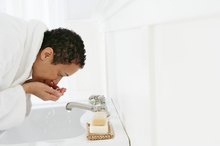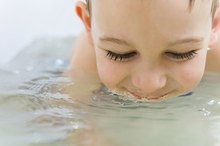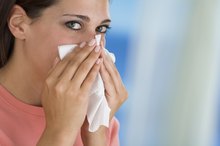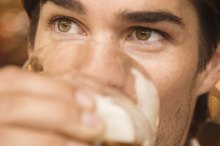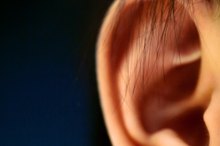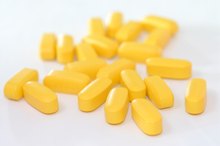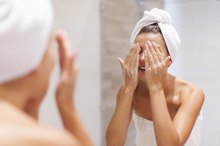What does fact checked mean?
At Healthfully, we strive to deliver objective content that is accurate and up-to-date. Our team periodically reviews articles in order to ensure content quality. The sources cited below consist of evidence from peer-reviewed journals, prominent medical organizations, academic associations, and government data.
The information contained on this site is for informational purposes only, and should not be used as a substitute for the advice of a professional health care provider. Please check with the appropriate physician regarding health questions and concerns. Although we strive to deliver accurate and up-to-date information, no guarantee to that effect is made.
Rosacea & Acne in Teenagers
Fluctuating hormones in teenagers can lead to the development of a skin condition known as acne. Acne can result in facial redness—a shared trait of rosacea, a skin condition related to blood vessels in the face. Because both conditions can affect a teenager’s self-esteem and are treated in different ways, a fast diagnosis and treatment can help to reduce symptoms.
Significance
Rosacea occurs when blood vessels in the skin do not work properly, which can cause symptoms including redness and the appearance of being flushed, according to Dr. Geoffrey Nase, on his rosacea resource website DrNase.com 1. Although this condition "most commonly presents in the 3rd and 4th decade of life," teenagers can experience the condition, notes Dr. Peter Crouch on Rosacea-Research.com 2.
Acne is a skin condition that also causes facial redness, according to Kids Health 4. However, this redness is due to inflammation of the facial pores. For teenagers, this most often occurs when the hormones stimulate the overproduction of oil. This clogs the pores, resulting in acne blemishes.
- Rosacea occurs when blood vessels in the skin do not work properly, which can cause symptoms including redness and the appearance of being flushed, according to Dr. Geoffrey Nase, on his rosacea resource website DrNase.com 1.
Identification
Clogged Pores on Nose & Chin
Learn More
Rosacea is characterized by facial flushing—meaning a teenager’s skin may be red on the cheeks. Rosacea sufferers also may have papules, which are small, white bumps that do not contain any pus, states Dr. Nase. While acne blemishes are red, in teenagers the lesions are often filled with sebum or bacteria, according to Kids Health 4. These may include pimples, whiteheads or blackheads.
- Rosacea is characterized by facial flushing—meaning a teenager’s skin may be red on the cheeks.
- Rosacea sufferers also may have papules, which are small, white bumps that do not contain any pus, states Dr. Nase.
Misconceptions
Many teenagers hold misconceptions about the causes of their acne or rosacea. For example, eating chocolate or drinking sodas are not linked with causing acne, reports Kids Health 4. Teenagers also may turn to the tanning bed to reduce rosacea or acne symptoms—this can actually exacerbate either condition.
- Many teenagers hold misconceptions about the causes of their acne or rosacea.
- Teenagers also may turn to the tanning bed to reduce rosacea or acne symptoms—this can actually exacerbate either condition.
Treatment
Why Is My Face Suddenly Breaking Out in Acne?
Learn More
Treating acne requires cleansing the skin twice daily to remove excess dirt and oil. While it can be tempting to scrub the face, refrain from doing so—this can aggravate the pores and cause them to produce more oil. You also can apply an over-the-counter treatment such as benzoyl peroxide or salicylic acid, which can help to reduce oil, according to the American Academy of Family Physicians 5.
Anti-acne treatments are not effective for treating rosacea and may irritate the skin, according to Dr. Nase 1. Those with rosacea should always wear a sunscreen with a sun protection factor of 15 or higher, because the sun can aggravate rosacea symptoms. Since many topical applications lead to irritation, a teenager should discuss with a physician what products can be used.
- Treating acne requires cleansing the skin twice daily to remove excess dirt and oil.
- Those with rosacea should always wear a sunscreen with a sun protection factor of 15 or higher, because the sun can aggravate rosacea symptoms.
Emotional Considerations
Both acne and rosacea are linked to self-esteem issues for teenagers, including embarrassment, depression and anxiousness, according to Acne Rosacea Guide 3. Because self-image and self-esteem are very delicate during teenage years, treating acne and rosacea can help teens to avoid emotional issues. Teens should avoid picking or popping rosacea and acne blemishes, as this can leave scars. If you notice your teen picking at these areas excessively, it could be a sign of a psychological condition known as dermatillomania.
- Both acne and rosacea are linked to self-esteem issues for teenagers, including embarrassment, depression and anxiousness, according to Acne Rosacea Guide 3.
Related Articles
References
- DrNase.com: Rosacea Skin Treatments
- Rosacea-Research.com: Rosacea Questions Answered
- Rosacea Guide: Rosacea Basics
- Kids Health: What Can I Do About Acne
- American Academy of Family Physicians: Acne in Teens
- Reinholz M, Ruzicka T, Steinhoff M, et al. Pathogenesis and clinical presentation of rosacea as a key for a symptom-oriented therapy. J Dtsch Dermatol Ges. 2016;14 Suppl 6:4-15. doi: 10.1111/ddg.13139
- Zhou M, Xie H, Cheng L, Li J. Clinical characteristics and epidermal barrier function of papulopustular rosacea: A comparison study with acne vulgaris. Pak J Med Sci. 2016;32(6):1344-1348. doi: 10.12669/pjms.326.11236
- Rainer BM, Kang S, Chien AL. Rosacea: Epidemiology, pathogenesis, and treatment. Dermatoendocrinol. 2017;9(1):e1361574. doi: 10.1080/19381980.2017.1361574
- Gravina A, Federico A, Ruocco E, et al. Helicobacter pylori infection but not small intestinal bacterial overgrowth may play a pathogenic role in rosacea. United European Gastroenterol J. 2015;3(1):17-24. doi: 10.1177/2050640614559262
Writer Bio
Rachel Nall began writing in 2003. She is a former managing editor for custom health publications, including physician journals. She has written for The Associated Press and "Jezebel," "Charleston," "Chatter" and "Reach" magazines. Nall is currently pursuing her Bachelor of Science in Nursing at the University of Tennessee.
